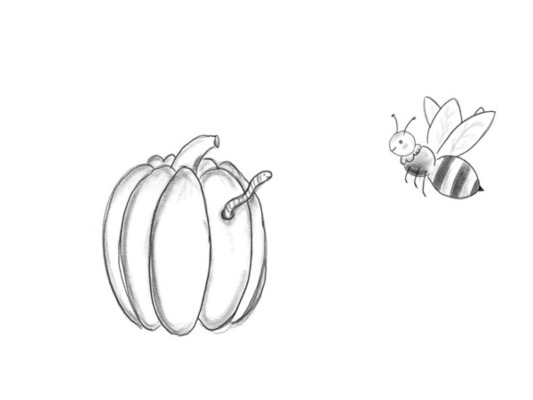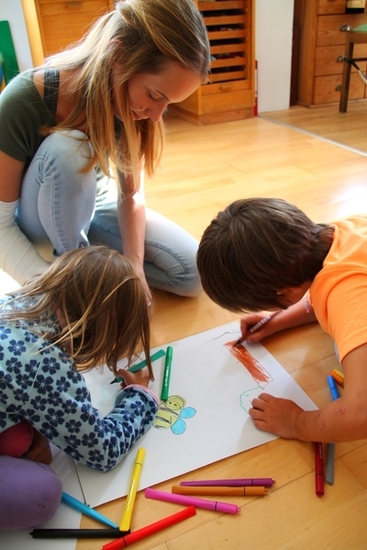Ecopolis Exhibition
Implementing a Guided Museum Tour for Children
06.12.2019
Advisor: Dr. Gesa Lüdecke
This year the Ecopolis exhibition on Munich's environmental histories at the whitebox displayed several new stations, in addition to the already existing ones from the year 2017. The stations talked about different places in and around Munich like the English Garden, the Isar or the slaughterhouse quarter. One addition to the exhibition was my station about a little bee.
Telling a Different Story
Unlike the other stations, it didn’t reveal secrets or unknown facts about a certain locality. Instead, the little bee tried to make the Ecopolis exhibition accessible to young children in the form of a story about each station. At my station, the children could take away a card with a story on one side and a black and white drawing on the other side. After the children read the story, they were able to explore the exhibition on their own and then draw or colour their own version of the stories. The Ecopolis exhibition was created to reach a broad range of people, the texts were written in a non-scientific language. Though in this way the exhibition was made accessible for a non-academic audience, the texts were still too complex for children. Excluding children would have meant losing an educational opportunity, as the exhibition is especially interesting for this particular audience. This is the reasons why I chose to write and draw an educational museums guide, especially addressed towards children.

The little bee is having a conversation with the worm.
A Collaborative Work
In order to realise this, I had to select the most interesting facts of each Ecopolis station, explain them in a simple language and then bring the information across in the form of a short story. I tried to put this into practice by taking the children on a journey with the bee, that is visiting each station and talking with specific local animals that explain the background information in an entertaining and easy to grasp way. The main message of these stories was that no matter where we look, humans left their traces on the environment surrounding us. To get a clear idea about each station me and my proofreaders, three children, went to some of the places in person. We sat down to read my drafts and draw some sketches. The most interesting part of my final project was to experience how children see the world differently. The stories of the little bee are still accessible as part of the virtual version of the Ecopolis exhibition.

The children have the chance to bring in their own ideas.

